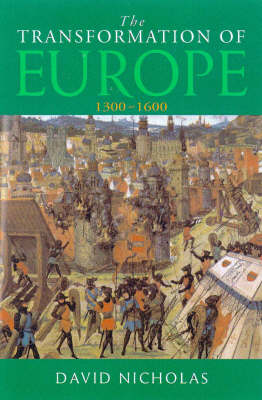Arnold History of Europe
1 total work
A survey of the history of Europe during the three centuries traditionally seen as bridging the "late mediaeval" or "Renaissance" periods and the early modern age. It shows the important changes in the political configuration and governing institutions of Europe, economic developments and social problems, Europe's relations with the broader world, creative activity and religious attitudes that begin at the end of the 14th century and culminate in the early 17th. Themes include the development of state institutions at both the national and local levels; the growth of an integrated European economy in the course of a cycle of depression to recovery; the transition of a Europe under siege by eastern powers to an expansionist and colonial Europe; the changing attitudes toward the classical and Christian heritages of Europe as reflected in educational institutions, curricula and attitudes and in secular and religious expression. Although the importance of seeing the entire period as a unit is emphasized throughout, the book is structured in two parts, dividing around 1450, so that those who prefer the more traditional periodization can still readily use it.
